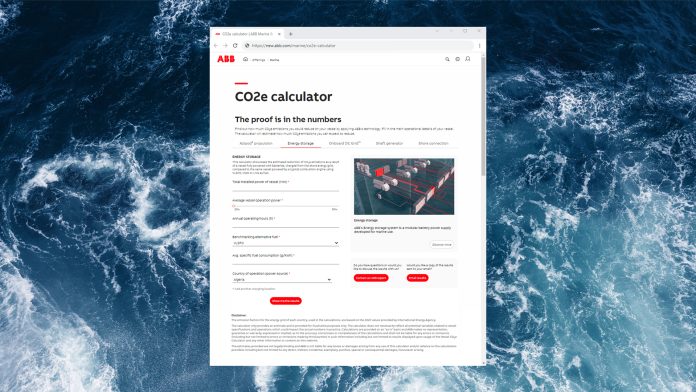
ABB has launched an innovative digital tool designed to empower ship owners, operators, and designers in assessing the environmental impact of various ABB technologies implemented onboard ships.
The CO2e (carbon dioxide-equivalent) Calculator, applicable to five key ABB maritime solutions—Azipod® electric propulsion, energy storage, Onboard DC Grid™ power system platform, shaft generator, and shore connection—offers insights into their potential contribution to the shipping industry’s decarbonization goals as outlined by the International Maritime Organization (IMO).
Specifically tailored to Azipod® propulsion, the CO2e Calculator quantifies the anticipated reductions in CO2e emissions achieved by utilizing Azipod® propulsors instead of a traditional shaftline system. It covers a spectrum of scenarios applicable to cruise ships, yachts, ferries, offshore support vessels, and potentially other vessel types with similar operational profiles.
In the context of ABB’s energy storage system, the tool provides a clear depiction of the emissions reductions attainable when a vessel utilizes batteries charged from the shoreside grid, as opposed to relying on a conventional combustion engine fueled by fossil resources.
“ABB has a long history of developing energy-efficient solutions for the maritime industry, and now we can demonstrate the tangible emission-reduction impact of those products to our customers,” stated Tommi Lempiäinen, head of Strategy and Sustainability, ABB Marine & Ports.
Tommi Lempiäinen further added, “With this level of transparency, shipowners are empowered to make informed decisions on which solutions to invest in – calculated for the specific scenario in question. This is a small but significant step within the framework of our broader commitment to driving maritime decarbonization following the IMO’s net-zero ambitions.”





